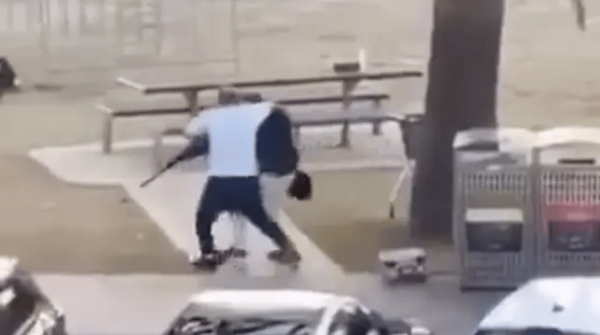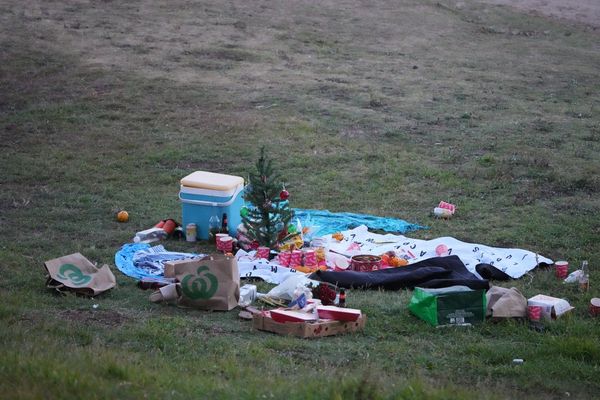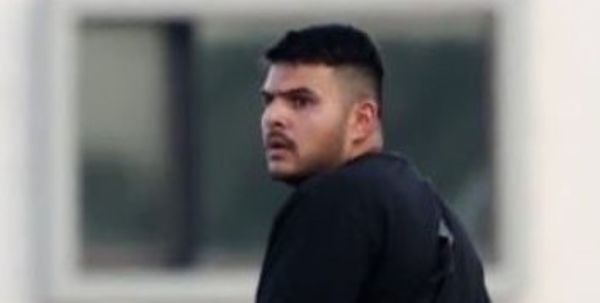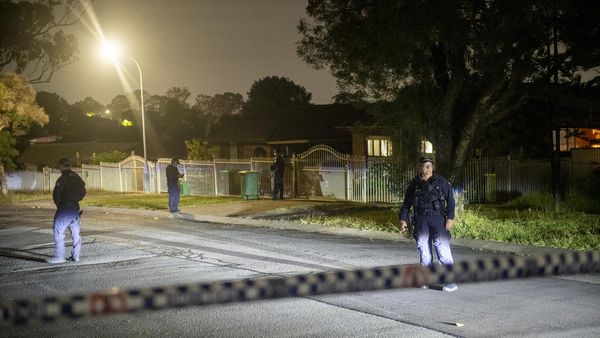
Photograph: Charles Chaplin Productions/Allstar
Earlier today I set you these three puzzles. Here they are again with solutions.
1. Roll with it
Imagine a weight is being rolled along on logs, as below. The logs are all identical, and have a circumference of 1m.
How far does the weight move forward when a log completes one full rotation?

Solution: 2m.
When each log rolls forward, its point of contact with the weight moves backwards, so after one full rotation, the weight will roll forward 1m with respect to the log. But the log is also rolling on the ground, and after one full rotation, the log has moved 1m forward with respect to the ground. So the weight moves a total of 2m.
2. Locus pocus
Two searchlights with front-and-back lights are rotating clockwise at the same constant speed, as illustrated below. The beams are not parallel, and thus always intersect at a point.
What is the shape traced out by the intersection point?

Solution: a circle.
Draw a triangle with vertices being the searchlights A and B, and the beam intersection point C.
Rotate AC and BC by the same angle, clockwise to give a new intersection point C’. Because the decrease in angle CAB is equal to the increase in CBA, the third angle remains constant, ie angle ACB = angle AC’B.

Now draw the circumcircle of ΔABC, as below, and instead of rotating lines AC and AB, simply move point C along the circumference. The theorem ‘the angle subtended by a chord of a circle is equal at all points on the circumference’ tells you that the third angle, ACB remains constant as one moves C along the circumference. From this we can conclude the locus traced by the intersection point of AC and BC over time is a circle. (Yes, you needed to remember that theorem.)

3. Rover’s return
A Mars rover drives a full circle around the red planet. Assume that Mars is a perfect circle, and the rover travels a full circumference, which is about 21,000 km
If the rover is 2m tall, how much further does the top of the rover travel compared to the bottom of the rover during its Martian circumnavigation?
a) Less than 15m
b) Between 15m and 1km
c) Between 1km and 1,000km
d) More than 1,000km
Solution: a)
Remarkably, the top travels only about 13m more than the bottom. What’s even more surprising is that this distance does not depend on the size of the planet. The answer would be the same if the rover circumnavigated a planet the size of Jupiter, or even the Sun.
The calculation is straight forward. We know that circumference = 2 x pi x radius. Let the height of the rover be H and the radius of Mars be r.

Then the difference between distances travelled by top and bottom are:
2 x pi x (H + r) – 2 x pi x r
= 2 x pi x H
= 2 x 3.14 x 2
(since H = 2, and pi = 3.14 to two decimal places.)
= 12.56m to two decimal places
I hope you enjoyed today’s puzzles. I’ll be back in two weeks.
Thanks to Shaheen Tonse for suggesting puzzle 2.
I set a puzzle here every two weeks on a Monday. I’m always on the look-out for great puzzles. If you would like to suggest one, email me.
I give school talks about maths and puzzles (online and in person). If your school is interested please get in touch.







